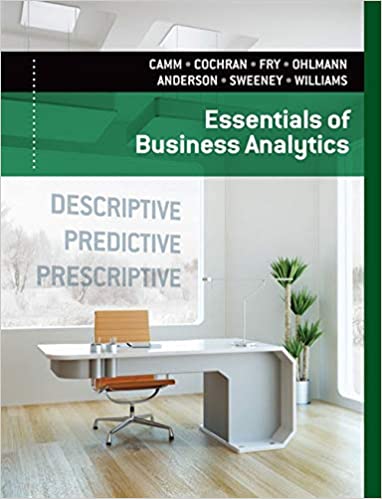
Essentials of Business Analytics 1st Edition by Jeffrey Camm,James Cochran,Michael Fry,Jeffrey Ohlmann ,David Anderson
Edition 1ISBN: 978-1285187273
Essentials of Business Analytics 1st Edition by Jeffrey Camm,James Cochran,Michael Fry,Jeffrey Ohlmann ,David Anderson
Edition 1ISBN: 978-1285187273 Exercise 17
A put option in finance allows you to sell a share of stock at a given price in the future. There are different types of put options. A European put option allows you to sell a share of stock at a given price, called the exercise price, at a particular point in time after the purchase of the option. For example, suppose you purchase a six-month European put option for a share of stock with an exercise price of $26. If six months later, the stock price per share is $26 or more, the option has no value. If in six months the stock price is lower than $26 per share, then you can purchase the stock and immediately sell it at the higher exercise price of $26. If the price per share in six months is $22.50, you can purchase a share of the stock for $22.50 and then use the put option to immediately sell the share for $26. Your profit would be the difference, $26 2 $22.50 5 $3.50 per share, less the cost of the option. If you paid $1.00 per put option, then your profit would be $3.50 2 $1.00 5 $2.50 per share.
a. Build a model to calculate the profit of this European put option.
b. Construct a data table that shows the profit per share for a share price in six months between $10 and $30 per share in increments of $1.00
a. Build a model to calculate the profit of this European put option.
b. Construct a data table that shows the profit per share for a share price in six months between $10 and $30 per share in increments of $1.00
Explanation
a.
Let the price of the option be $1, t...
Essentials of Business Analytics 1st Edition by Jeffrey Camm,James Cochran,Michael Fry,Jeffrey Ohlmann ,David Anderson
Why don’t you like this exercise?
Other Minimum 8 character and maximum 255 character
Character 255


